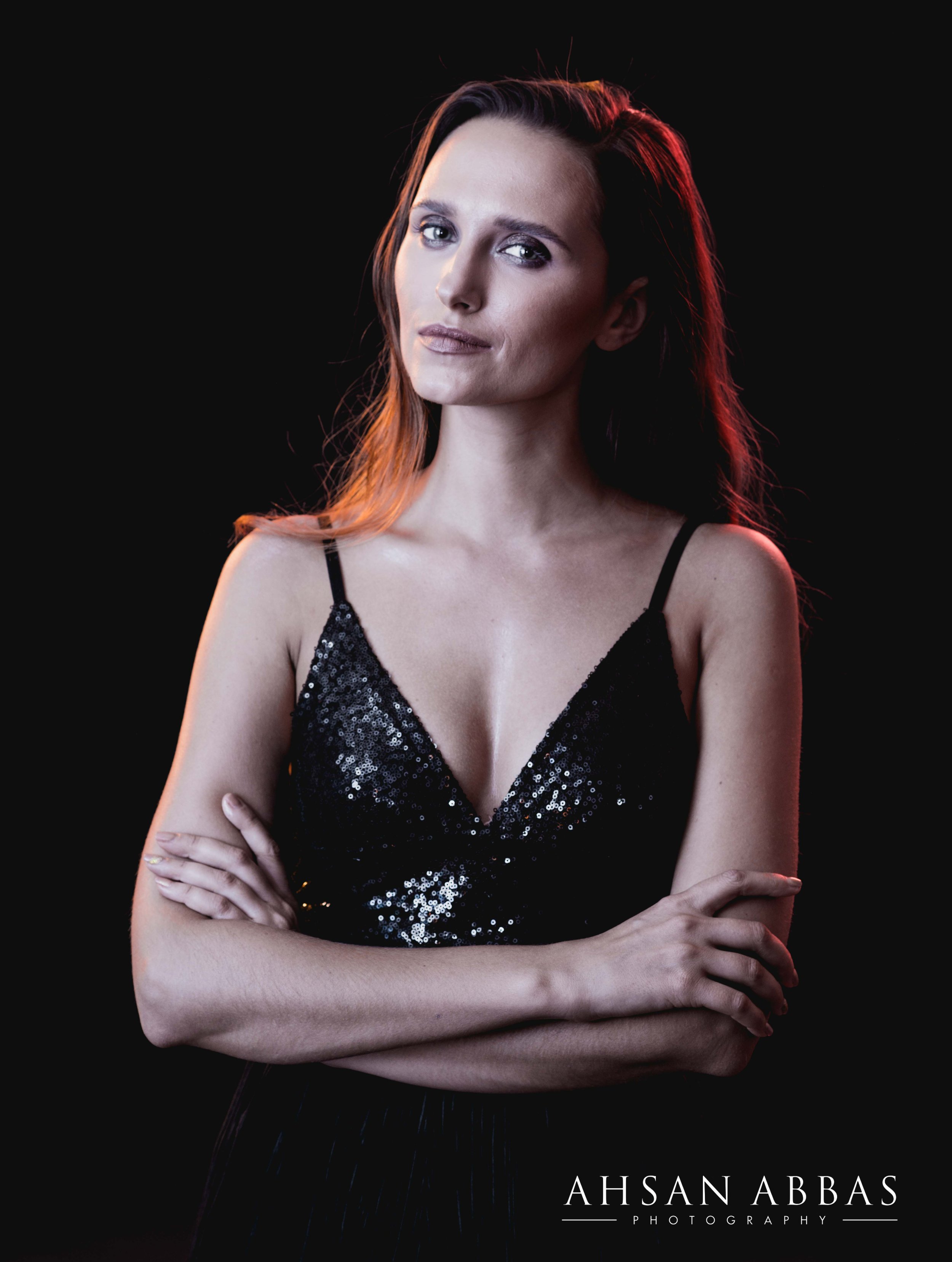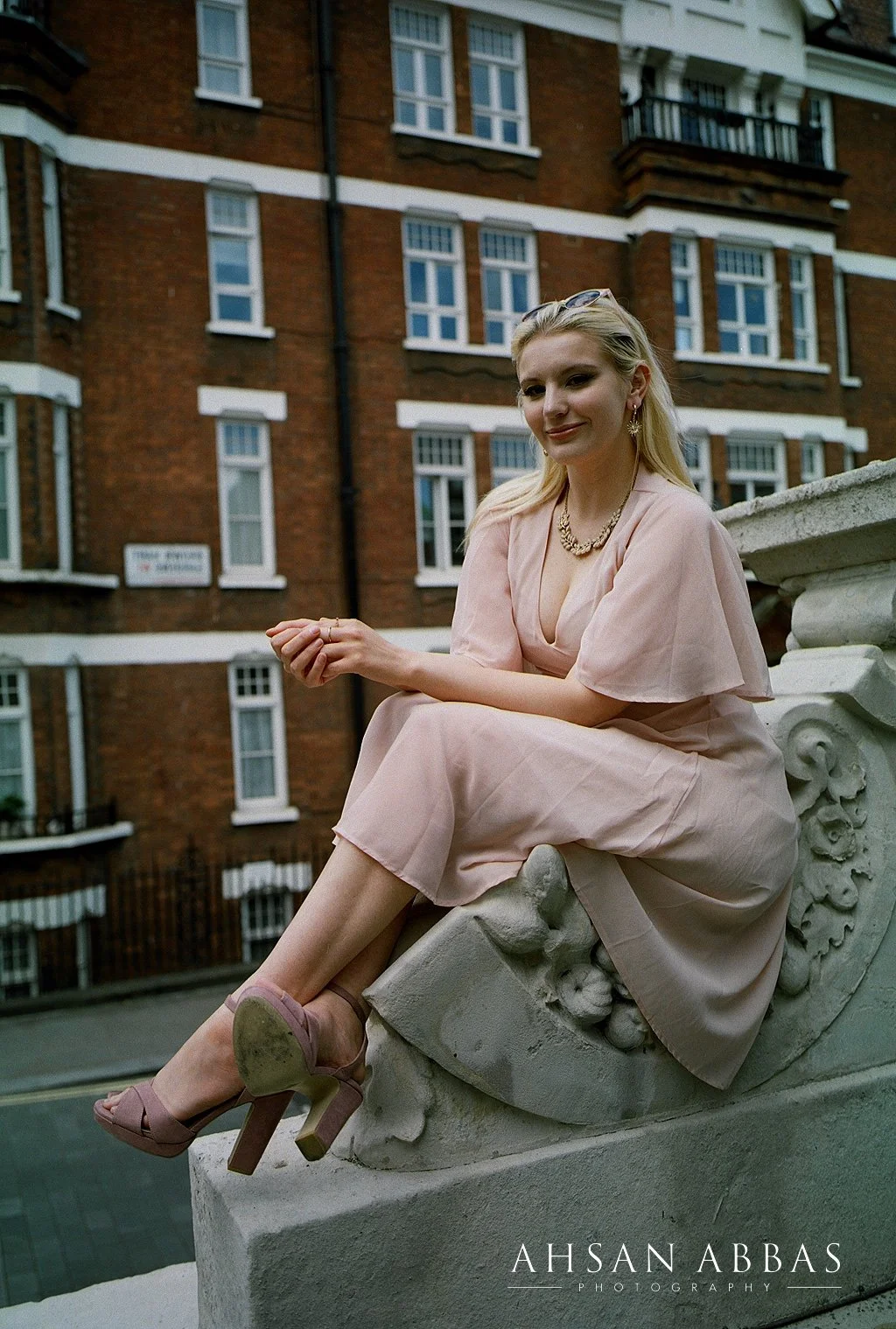After a first set of good results with my Fuji GSWiii, from the shoot with Anna, I organised a group shoot with Luise back in Central London.
I hadn’t seen these togs for quite some time so it was a great opportunity to catch up and enjoy some photography together.
I chose to shoot some Ektachrome and Kodak Gold in today's outing and we started off outside Bank.
When I turned up, I found a commercial shoot going on which looked pretty intense and another tog with her makeup artist taking shots on the steps.
Luckily the commercial group were wrapping up and they were on their way out. Perfect time for us to swoop in and start taking shots!
With only 8 frames to each roll of film, the 6 by 9 film size is incredible to view, especially on colour positive film.
I was confident that Ektachrome would perform well today given the lighting conditions. There would not be a need for off camera flash today.
How to Shoot with Rangefinders in Bright Sunny Conditions
First shot, super overexposed, unfortunately something to carefully consider for next time. In the broad strong sunlight perhaps underexposing by a stop or two may help to resolve this issue.
The second shot performed better although there appears to be a blue tinny cast to the image. I’m not exactly sure why this is. If you know or have a hypothesis I would love to hear it in the comments below.
The sunlight was exceptionally strong today and at times difficult to keep your eyes open without some sunnies on.
In this shot, I asked Luise to close her eyes and imagine something longingly while resting on the stairs.
The whites have come out brilliantly white and probably has been compounded by the whitish reflection off the stairs too.
Key takeaway here is to avoid bright white clothing in bright sunny daylight conditions!
A momentary shade and this image was captured spot on. I like the way Luise is looking down the barrel of the camera but also how arms and legs are creating triangular shapes which adds to the compositional balance of this image!
It’s also good to see the highlights not being blown out and the colours in this frame have come out remarkably accurately!
How to Posing Tall Subjects and why your positioning and lens choice matters
A quick side note here, be careful when posing tall subjects. Shooting from a low angle will accentuate the profile of your subject whereas shooting from a higher angle will exaggerate the torso and shorten the legs.
If your focus is on the head and chest of the subject then shooting from above would be recommended but for full length shots this should be avoided. This is mainly because your shot will compress the subject’s profile creating unflattering results.
To get the best results, use an appropriate lens which flatters the subject. In my case, I was working with a fixed 65mm lens, which is equivalent to a 28mm lens on a 35mm camera.
That is a relatively wide angle lens. Perfect for street photography but one to carefully use if shooting portraits.
Ultimately, a great pose is captured in camera with the combination of the right camera angle, body position, and focal length!
Got Luise to lay back for the next shot and you can see immediately the sun was back out in full force. Slide film scanning is proving to be quite a challenge, but with practice this will improve further.
We finished off at the steps with this shot. A reflector or an translucent umbrella would have helped reduce the amount of light falling on Luise but I like the pose again as is, the use of triangles but also the columns in the background accentuating the height or sense of scale in the image.
We decided to move away from the stairs and took some on this bench. This image has come out almost tack sharp and the image looks fantastic on this slide.
Working with large rangefinders can be tricky, however, you may have noticed the image has been a bit cropped off at the bottom.
To avoid such errors with these cameras give yourself a little bit more space within the frame in your visor. The more you shoot with this camera or similar ones, the more skilled you will become. It’s all about continually mastering your craft!
A follow up shot with Luise sat down looking into the distance. Again the colour reproduction here is absolutely spot on with the general tones of the outfit and setting creating a fitting vibe.
We changed it up a little again trying to get some more shade going down into the underground however, it was a little tricky here and whilst the colour reproduction was good I was working on f5.6 with shutter speed of 1/30sec which has added a little motion blur to the image.
The final shot was taken with Luise resting her arm on the railing, a slight miscalculation of the distance has given this image a bit of a defocused look.
I found Kodak Gold 120 to be very reliable
I switched up to shoot some Kodak Gold, colour negative film, which tends to be a little more forgiving. Be sure to check out my previous videos on Kodak Gold.
I have found it to be very reliable and brought some along as a substitute just in case I had completely blown the first set on Ektachrome
Luise was a superstar and switched up her outfits in no time. We got to shoot with her in this bold yellow outfit which was spot on!
I really like this image of Luise standing in the middle of the road. Don’t be deceived by the white lines, that is the bike lane in this extremely narrow road.
It was a case of darting in and out to shoot here but we got the shot! Don’t do this unless you have someone watching your back! Thank you Marcus!
Next time, I would move in much closer because the focus of the image is Luise and not the surroundings.
Moved back to the tiny sidewalk and took this full body portrait. Kodak Gold does have a tendency to leave this warmer tone, which in this case added to a late afternoon feel.
With time pressing, I took these two quick shots again focusing on full body composition and then moving in for a closer shot before finishing off with a relaxed pose on the wall.
How to setup your rangefinder to get the best images every time
Overall, this was the second time out shooting fashion with my Fuji GSWiii. Biggest learning from this shoot was that I needed to carefully consider the settings in strong sunlight.
Even with light metering you will need to carefully consider the type of film you are shooting with. Moving into a little more shaded location would perhaps have resulted in more reliable outcomes on this slide film.
I am sure you have lots of your own photos, how often do you spend reviewing them? You have seen that I make lots of mistakes too but the key here is to go back and reflect on your work.
By doing this, you will be able to make those incremental improvements.
With time, your images will become even better, so when you come back to look at your first photographic work, you’ll look back to see how far you have come!
If you are new to shooting with the Fuji GSWiii or similar cameras then it takes some practice to get your distances spot on too. It can be a little tricky using the rangefinder to focus accurately.
Try not to put too much pressure on yourself with time limitations. This is so you can be more considerate with your actual distances between you and your subject. Therefore making sure you get the sharpest image possible every time.
This particular Fuji comes with a fixed 65mm lens and if you enjoy shooting street photography it could be a fun companion with its 28mm, 35mm camera equivalent lens. I’m curious how an actual Leica would feel like shooting with, perhaps one day!
Although primarily known for landscape photography, the Fuji GSWiii has the potential to give photographers new creative opportunities in portrait photography.
I think in future shoots I’m going to try and get in more closer shots to see how the image reproduces.
Overall, once again I feel the closer I was shooting to Luise, the richer the details in each of the frames. Next time, avoid bare sunlight too!
With more shoots I will slowly find my preference, Let’s see where this takes me next!
Want to stay in the loop with what I am up to and my work? Keep coming back to ahsanabbas.com/journal
For more videos subscribe and turn on the notifications for your weekly video drop!
































